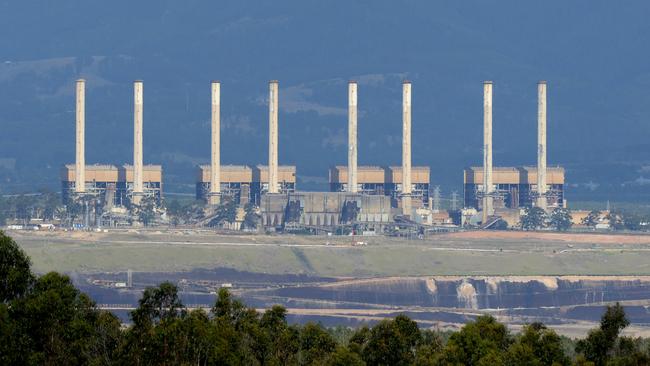Coal closures, poor policy and $bn profit lift behind power price rise, says Grattan Institute
Power companies are making billions more in profits — and coal plant closures and kneejerk government policy are costing us even more, researchers say. But they have a plan to fix it.
SA News
Don't miss out on the headlines from SA News. Followed categories will be added to My News.
The three biggest electricity companies are making $1 billion more in combined profits than three years ago.
But poorly thought-out government policy and rising costs of gas and coal were what really drove high prices for consumers, influential research group the Grattan Institute says.
“The perception of gouging doesn’t match the reality,” Grattan says of AGL, Origin and EnergyAustralia’s profits in a report published on Monday night.
In the three years to June, the overall wholesale revenue extracted from customers in the National Electricity Market increased by about $8 billion to nearly $19 billion.
Consumers are cranky about prices and governments have been reacting with kneejerk policies which have actually done more harm than good, Grattan says.
It proposes a new policy to encourage investment and reduce prices by improving certainty through making coal-fired power stations set money aside to tie them into an orderly closure.
“If you look at wholesale prices, there was a very sharp increase around 2017,” said report co-author Guy Dundas.
“Coal and gas prices were both increasing at that time and there was a general tightening of the supply-demand balance in the market because of the closure of Hazelwood (a major coal-fired power station in Victoria).

“Those two factors really explain most of the change.
“You can’t say that it was driven by the coincident increase in renewables. I just don’t think that is correct.”
While South Australia no longer has any coal-fired power stations, the future of coal in other states will affect prices across the National Electricity Market, including SA.
The closure of Hazelwood and the Northern power station in Port Augusta in 2016 raised political concerns that future closures would increase price and reduce reliability, Grattan says.
“It is hardly surprising that governments have felt compelled to act in response to this pressure,” the Grattan report says.
“But government responses have been ad hoc and uncoordinated, rather than clear and comprehensive.
“These knee-jerk reactions have created uncertainty and discouraged the very investment that is needed.”

Australia’s coal-fired power stations are ageing and will close over the next decades.
The Federal Government’s “chaotic approach to climate policy” and interventions, such as Snowy Hydro 2.0, the “big stick” legislation and underwriting some new generation as well as the former SA Government’s purchase of back-up generators have frightened investors, Grattan says.
Instead it proposes coal-fired stations nominate a closure window and pay into a fund which will be given back if they meet the target.
However, funds would be paid to the Australian Energy Market Operator to bolster the market if closure was early or late.

Mr Dundas said it should not be regarded as a tax or anti-coal penalty because it could be repaid.
While Engie closed Hazelwood with only five months notice, AGL had given seven years’ notice it would close the Liddell power station in NSW.
“Early notice of closure may be good for consumers, but the political effects have not been particularly good for AGL,” Grattan said.
The company had been pilloried with government demands to extend its life or sell it — leading to AGL adding a year before closure.
“The Federal Government’s fight to avoid Liddell’s closure is concerning because it makes it harder for Australia to achieve its emissions reduction targets,” Grattan says.
“It is also likely to prove futile, as the underlying economics of the plant are poor.”
Energy Minister Angus Taylor rejected the Grattan analysis.
“Blaming the Australian Government’s Underwriting New Generation Investments program and Snowy 2.0 for a lack of investment in reliable generation is like blaming an ambulance for turning up to an accident,” Mr Taylor said.
“The lack of reliable investment in the last decade has led to significant cost and reliability pressures in some jurisdictions, and it is the Commonwealth Government that is driving the agenda to fix this major problem.”
The Grattan report follows the Reserve Bank of Australia last week warning that climate change is becoming an increasing important risk factor for financial institutions with investments in power generation, mining or energy-intensive activity.
“Sudden or unexpected regulatory change could quickly lower the value of such assets or businesses, some of which may become economically unviable or ‘stranded’,” the Reserve Bank said.
“Such regulatory changes could either be domestic or come from abroad, given the carbon intensity of Australia’s exports.”
